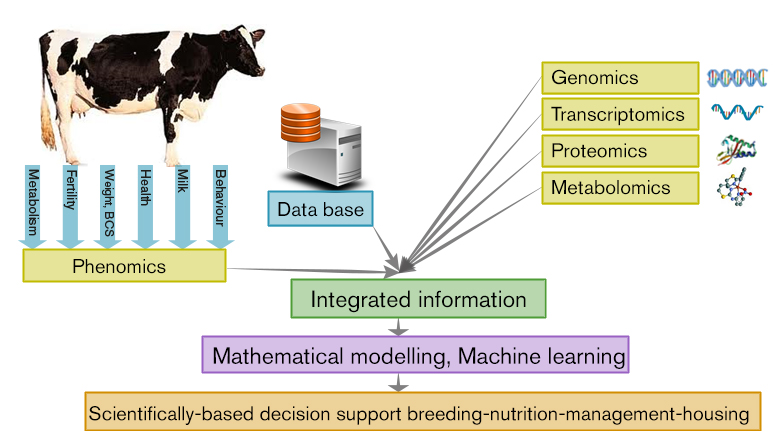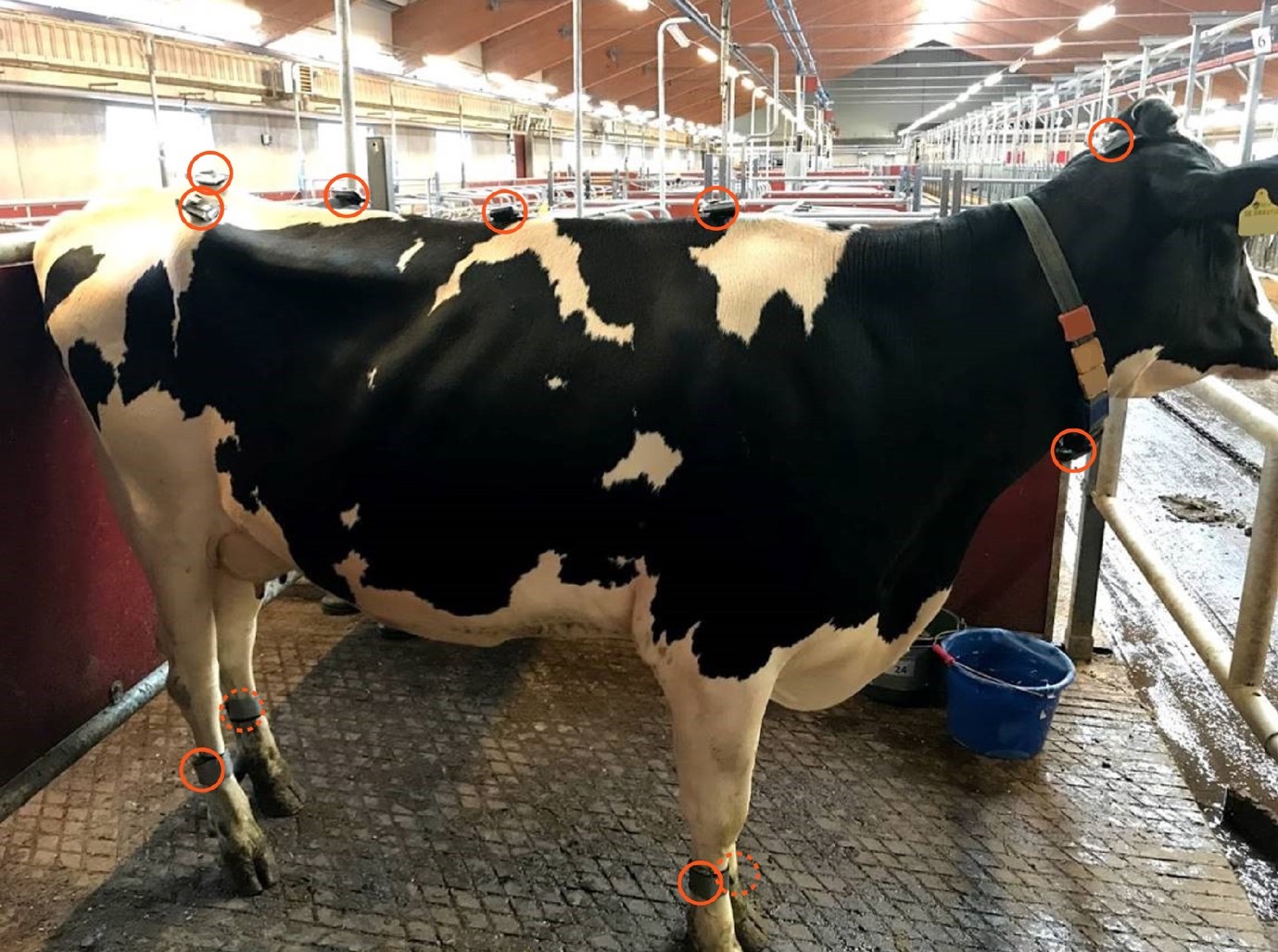About the research
Data has been routinely collected for more than 60 years through the official milk recording and artificial insemination activities in Sweden, but a large amount of data is now possible to collect in modern dairy farms through sensors and recording systems. In addition, there is an increasing use of molecular characterization of animals on different biological levels through:
This development means that there is now access to large amounts of data (Big data), that often are both heterogeneous and with complex structures. The goal of our research is to use all this data to provide information as optimal as possible. This requires basic research into information management and model development. The focus of the research at BLAS is a combination of mathematics, statistics and computer science (e.g. computational statistics, machine learning and mathematical optimization). A large part of the research is, however, interdisciplinary and involves genetics, animal science, engineering as well as veterinary epidemiology.
The Beijer laboratories in Uppsala
The Beijer Laboratory for Animal Science is one part of the Beijer laboratories in Uppsala, Sweden, and is financed by a donation from the Kjell and Märta Beijers Foundation (Beijerstiftelsen).
Researchers and projects at the Beijer Laboratory of Animal Science
Current research
Elin Hernlund: Cow Signals - Interpretation and Digital Tools
Posture, movements, and facial expressions are important signals for how a cow feels. But how specific are they? Which diseases can we deduce? Can we tell if the cow is happy or dissatisfied?
In today's modern production systems, loads of automatic data about the cows' production capacity and health are collected, but despite this, diseases are sometimes detected too late. The farmer's "animal eye", which can detect illness through information from the cow's body language, risks becoming less important as we move towards increased automation of the herd management.
Therefore, I am working within the Beijer Laboratory for Animal Science to create digital methods that can detect animal signals and interpret the animals' movement patterns. The research focuses on describing the movement pattern associated with lameness in detail by measuring the cow's movements using IMU sensors. IMU sensors measure acceleration and rotation of various body segments of the cow (picture). We use both biomechanical signal analysis and machine learning methods to understand precisely how the movement pattern changes with mild lameness. This gives us the opportunity to help individual cows early in the disease process and understand if the environment or management needs to be changed to prevent lameness from occurring.
The movement pattern we describe in detail can, in the next step, be used to detect lameness through surveillance cameras in the barn with the help of so-called computer vision. The seeing computer does not need equipment on the animals; instead, anatomical points on the cow's body and activity and movement patterns are identified using AI methods. This makes the technology inexpensive and easy to use once it has been developed.
To take a new major step in AI development for animal health, we are also working with a pilot project where we are building three-dimensional digital models of animals. The models learn a variation of body shapes from 3D scanning of cows. It can then adapt to each individual in a herd that it sees in a picture or video and collect information about the animal's health status and body language. This would allow a camera in the barn to get even more detailed information about the animals' body shape, posture, movements, and thereby health.
With the biologically knowledgeable AI technology, we hope to contribute to a digitized precision livestock management where the animals and their well-being are the focus.
 IMU-sensors are taped to different body segments to identify movement. Photo: Katrina Ask.
IMU-sensors are taped to different body segments to identify movement. Photo: Katrina Ask.
Martin Johnsson: Genome dynamics and digital dairy breeding
Modern animal breeding uses large quantities of data about the traits and the DNA of animals, that need to be analysed into statistics that support breeding decisions. The topic of our research is to find new ways to use large datasets, both phenotypic and genomic, in dairy cattle breeding.
One project uses statistical models to quantify the effect of temperature stress in Swedish cows during the hot summer months. The purpose is to develop genetic evaluation that may improve heat tolerance in cattle, and to understand the relationship between heat tolerance and other robustness and resilience traits.
In my work the genome dynamics of livestock breeding, I model genetic variation in the genome to characterise genetic variation and the effects of selection. I use computational modelling to evaluate new representations of genomic variation. The aim is to understand the consequences of modern genomic breeding and, in the long term, to enable genomic prediction with whole-genome sequence data.
I use similar methods, in combination with computational modelling and theoretical calculations, to study how to manage genetic variants of individually large effects, such as genetic defects.
More information about Martins research is avaliable HERE.


 IMU-sensors are taped to different body segments to identify movement. Photo: Katrina Ask.
IMU-sensors are taped to different body segments to identify movement. Photo: Katrina Ask.